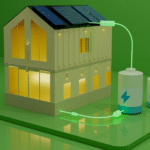Placemaking is the buzzword in urban development that describes the process of shaping public spaces. Today, however, the concept is taking on new importance. It’s about more than creating beautiful spaces — it’s about creating places that are good for the future of humanity and the planet.
ERA-co is a bold, global place consultancy taking on the challenge of placemaking in a rapidly changing world. “We started in 2019 with a mission to advance humanity through transformative placemaking,” recalls Steven Cornwell, Global Director at ERA-co. “At the time, we had no idea about the sweeping global shifts that would make our vision more relevant than ever.”
What is placemaking, and how is it changing?
Placemaking is the process of creating places that people want to be. It’s a community-led process focused on people and their relationship with the built environment.
“We harness the power of data analytics to unlock the true potential in neighborhoods, towns, and cities worldwide,” says Cornwell. “We design inclusive, safe, and enjoyable places where everyone feels at home. We shape public, residential, workplace, lifestyle and hospitality spaces to tell a story and build community.”
This holistic process integrates art, design, architecture, engineering, branding, user strategy and urban planning with landscaping. It can involve developing new infrastructure, parks, and squares as well as regenerating existing areas. In a nutshell, placemaking means designing, developing, and maintaining places that are people-friendly, community-oriented, and commercially viable. These places meet people’s needs and enhance their lives in meaningful ways.
The concept of improving cities and communities is not new, but the relationship between people and places is changing. Environmental concerns, booming populations, and shifting technology bring new urgency to placemaking.
“At a minimum, placemaking unlocks value and opportunities and generates strong, connected communities,” remarks Cornwell. “But it’s capable of so much more. Great placemaking has the transformative power to advance humanity. In today’s world, it’s more important than ever that we explore the full potential placemaking has to offer.”
The challenges facing fast-growing cities of the future
The world’s population is growing. According to the United Nations’ latest forecasts, by 2050, the global population will reach 9.8 billion. Over the past decades, population growth in city centers has not been matched by housing supply or infrastructure investment from local governments, and the problem is becoming worse.
The growing population is following a trend toward urbanization. In fact, by 2050, the UN predicts two out of every three people will live in cities. That projection amounts to 2.5 billion more people who will need housing, transportation, and services in today’s already crowded cities. The UN’s report also predicts that the number of megacities is likely to rise from 31 to 43 before 2030.
The infrastructure of today’s cities cannot keep up. Infrastructure is the backbone of a city, supporting everything from water supply to waste disposal, transportation, and communication. Still, it’s not built to last forever and requires constant upkeep to function correctly.
Moreover, repairing and building infrastructure is expensive. Today’s cities spend billions of dollars to build new roads, bridges, and tunnels. All that money goes into maintaining the current level of development and replacing old structures as they become obsolete or break down.
“As more people move into cities, the system starts breaking down,” explains Cornwell. “We need to go back to the drawing board and address the challenges of growing cities by making our communities more livable, sustainable, and resilient. That means thinking holistically about all aspects of urban planning. Looking forward, placemaking will be the key to creating the cities of tomorrow.”
In response to these challenges, ERA-co has developed a creative and collaborative approach to placemaking that optimizes public space, urban design, masterplan communities, and buildings, to reflect the needs, aspirations and identities of those who use them. “By combining design, technology and engagement, our placemaking methodologies create more vibrant, functional and livable environments. The benefits are numerous, including increased social interaction and community building, enhanced health and well-being, improved public amenity, increased economic activity and property values, and a greater sense of belonging,” says Cornwell.
Placemaking makes cities of the future sustainable and eco-friendly
One of the biggest challenges facing fast-growing cities of the future is sustainability. Cities need to be able to provide for their growing population while also preserving natural resources, protecting wildlife habitats, reducing pollution levels, and keeping energy costs low. Placemaking addresses sustainability issues head-on by reimagining new ways to live, work, and play in the cities of the future.
Placemaking starts from a place of human-centered planning. People design the neighborhoods and communities where they want their kids to play. By putting people first, they create infrastructure projects, public spaces, and transportation routes that meet needs and positively impact the space.
“Placemaking is about people and their relationship to their community,” Cornwell asserts. “Our placemaking innovation leads to more sustainable and resilient communities, as well as a more equitable distribution of resources and opportunities. Whether in urban or rural areas, principles of placemaking can be applied to create more livable, resilient places for all.”
Placemaking in today’s world is about more than just buildings and infrastructure. It’s about the people who use the city — how they interact with it, feel about it, and connect to each other through shared experiences. The world is changing, and only reimagining the way people live, work, and play will enable today’s urban planners to envision how cities will look in 50 years.
“Placemaking is more than just a buzzword,” concludes Cornwell. “It’s the way we will make cities of the future sustainable, eco-friendly, and livable. It’s the way we will drive positive social, economic, and environmental change for neighborhoods, towns, and cities.”



















